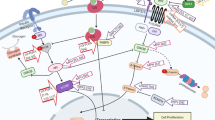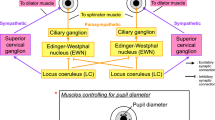Abstract
Attention-deficit hyperactivity disorder (ADHD) in adults is associated with impaired sleep, and it has been postulated that this impairment may contribute to the psychopathology of this common condition. One key driver of sleep/wake cycles is the circadian system, which at the molecular level consists of a series of transcriptional feedback loops of clock genes, which in turn produce endocrine, physiological and behavioural outputs with a near 24 h periodicity. We set out to examine circadian rhythms at the behavioural, endocrine and molecular levels in ADHD. Adults with ADHD as well as age- and sex-matched controls were recruited. Circadian rhythms were measured by means of actigraphy for the determination of gross motor patterns, by self-sampling of oral mucosa for assessment of rhythmic expression of the clock genes BMAL1 and PER2, and by estimation of salivary cortisol and melatonin levels. Actigraphic analysis revealed significant diurnal and nocturnal hyperactivity in the ADHD group, as well as a significant shorter period of best fit for the locomotor circadian rhythm in ADHD. BMAL1 and PER2 showed circadian rhythmicity in controls with this being lost in the ADHD group. Cortisol rhythms were significantly phase delayed in the ADHD group. These findings indicate that adult ADHD is accompanied by significant changes in the circadian system, which in turn may lead to decreased sleep duration and quality in the condition. Further, modulation of circadian rhythms may represent a novel therapeutic avenue in the management of ADHD.
This is a preview of subscription content, access via your institution
Access options
Subscribe to this journal
Receive 12 print issues and online access
$259.00 per year
only $21.58 per issue
Buy this article
- Purchase on Springer Link
- Instant access to full article PDF
Prices may be subject to local taxes which are calculated during checkout



Similar content being viewed by others
References
Fayyad J, De Graaf R, Kessler R, Alonso J, Angermeyer M, Demyttenaere K et al. Cross-national prevalence and correlates of adult attention-deficit hyperactivity disorder. Br J Psychiatry 2007; 90: 402–409.
Rösler M, Retz W, Retz-Junginger P, Hengesch G, Schneider M, Supprian T et al. Prevalence of attention deficit-/hyperactivity disorder (ADHD) and comorbid disorders in young male prison inmates. Eur Arch Psychiatry Clin Neurosci 2004; 254: 365–371.
Philipsen A, Hornyak M, Riemann D . Sleep and sleep disorders in adults with attention deficit/hyperactivity disorder. Sleep Med Rev 2006; 10: 399–405.
Rybak YE, McNeely HE, Mackenzie BE, Jain UR, Levitan RD . Seasonality and circadian preference in adult attention-deficit/hyperactivity disorder: clinical and neuropsychological correlates. Compr Psychiatry 2007; 48: 562–571.
Sobanski E, Schredl M, Kettler N, Alm B . Sleep in adults with attention deficit hyperactivity disorder (ADHD) before and during treatment with methylphenidate: a controlled polysomnographic study. Sleep 2005; 31: 375–381.
Gruber R, Xi T, Frenette S, Robert M, Vannasinh P, Carrier J . Sleep disturbances in prepubertal children with attention deficit hyperactivity disorder: a home polysomnography study. Sleep 2009; 32: 343–350.
Boonstra AM, Kooij JJ, Oosterlaan J, Sergeant JA, Buitelaar JK, Van Someren EJ . Hyperactive night and day? Actigraphy studies in adult ADHD: a baseline comparison and the effect of methylphenidate. Sleep 2007; 30: 433–442.
Corkum P, Tannock R, Moldofsky H . Sleep disturbances in children with attention-deficit/hyperactivity disorder. J Am Acad Child Adolesc Psychiatry 1998; 37: 637–646.
Van der Heijden KB, Smits MG, Van Someren EJ, Gunning WB . Idiopathic chronic sleep onset insomnia in attention-deficit/hyperactivity disorder: a circadian rhythm sleep disorder. Chronobiol Int 2005; 22: 559–570.
Van Veen MM, Kooij JJ, Boonstra AM, Gordijn MC, Van Someren EJ . Delayed circadian rhythm in adults with attention-deficit/hyperactivity disorder and chronic sleep-onset insomnia. Biol Psychiatry 2010; 67: 1091–1096.
Dijk DJ, von Schantz M . Timing and consolidation of human sleep, wakefulness, and performance by a symphony of oscillators. J Biol Rhythms 2005; 20: 279–290.
Guilding C, Piggins HD . Challenging the omnipotence of the suprachiasmatic timekeeper: are circadian oscillators present throughout the mammalian brain? Eur J Neurosci 2007; 25: 3195–3216.
Blomqvist M, Holmberg K, Lindblad F, Fernell E, Ek U, Dahllöf G . Salivary cortisol levels and dental anxiety in children with attention deficit hyperactivity disorder. Eur J Oral Sci 2007; 115: 1–6.
Kaneko M, Hoshino Y, Hashimoto S, Okano T, Kumashiro H . Hypothalamic-pituitary-adrenal axis function in children with attention-deficit hyperactivity disorder. J Autism Dev Disord 1993; 23: 59–65.
Xu X, Breen G, Chen CK, Huang YS, Wu YY, Asherson P . Association study between a polymorphism at the 3′-untranslated region of CLOCK gene and attention deficit hyperactivity disorder. Behav Brain Funct 2010; 6: 48.
Kissling C, Retz W, Wiemann S, Coogan AN, Clement RM, Hünnerkopf R et al. A polymorphism at the 3′-untranslated region of the CLOCK gene is associated with adult attention-deficit hyperactivity disorder. Am J Med Genet B Neuropsychiatr Genet 2008; 147: 333–338.
Brookes K, Xu X, Chen W, Zhou K, Neale B, Lowe N et al. The analysis of 51 genes in DSM-IV combined type attention deficit hyperactivity disorder: association signals in DRD4, DAT1 and 16 other genes. Mol Psychiatry 2006; 11: 934–953.
Van Someren EJ, Swaab DF, Colenda CC, Cohen W, McCall WV, Rosenquist PB . Bright light therapy: improved sensitivity to its effects on rest-activity rhythms in Alzheimer patients by application of nonparametric methods. Chronobiol Int 1999; 16: 505–518.
Cajochen C, Jud C, Münch M, Kobialka S, Wirz-Justice A, Albrecht U . Evening exposure to blue light stimulates the expression of the clock gene PER2 in humans. Eur J Neurosci 2006; 23: 1082–1086.
Mojón A, Fernández JR, Hermida RC . Chronolab: an interactive software package for chronobiologic time series analysis written for the Macintosh computer. Chronobiol Int 1992; 9: 403–412.
Bingham C, Arbogast B, Guillaume GC, Lee JK, Halberg F . Inferential statistical methods for estimating and comparing cosinor parameters. Chronobiologia 1982; 9: 397–439.
Archer SN, Viola AU, Kyriakopoulou V, von Schantz M, Dijk DJ . Inter-individual differences in habitual sleep timing and entrained phase of endogenous circadian rhythms of BMAL1, PER2 and PER3 mRNA in human leukocytes. Sleep 2008; 31: 608–617.
Akashi M, Soma H, Yamamoto T, Tsugitomi A, Yamashita S, Yamamoto T et al. Noninvasive method for assessing the human circadian clock using hair follicle cells. Proc Natl Acad Sci USA 2010; 107: 15643–15648.
Bjarnason GA, Jordan RC, Wood PA, Li Q, Lincoln DW, Sothern RB et al. Circadian expression of clock genes in human oral mucosa and skin: association with specific cell-cycle phases. Am J Pathol 2001; 158: 1793–1801.
Brown SA, Kunz D, Dumas A, Westermark PO, Vanselow K, Tilmann-Wahnschaffe A . Molecular insights into human daily behavior. Proc Natl Acad Sci USA 2008; 105: 1602–1607.
Randler C, Schaal . Morningness-eveningness, habitual sleep-wake variables and cortisol level. Biol Psychol 2010; 85: 14–18.
Hastings MH, Reddy AB, Maywood ES . A clockwork web: circadian timing in brain and periphery, in health and disease. Nat Rev Neurosci 2003; 4: 649–661.
Hirvikoski T, Lindholm T, Nordenström A, Nordström AL, Lajic S . High self-perceived stress and many stressors, but normal diurnal cortisol rhythm, in adults with ADHD (attention-deficit/hyperactivity disorder). Horm Behav 2009; 55: 418–424.
Lackschewitz H, Hüther G, Kröner-Herwig B . Physiological and psychological stress responses in adults with attention-deficit/hyperactivity disorder (ADHD). Psychoneuroendocrinology 2008; 33: 612–624.
Wirz-Justice A . Biological rhythm disturbances in mood disorders. Int Clin Psychopharmacol 2006; 21 (Suppl 1): S11–S15.
Acknowledgements
We acknowledge financial support from the Welsh Office for Research and Development and NARSAD. We also acknowledge technical assistance from Dr Sarah Forbes-Robertson.
Author information
Authors and Affiliations
Corresponding author
Ethics declarations
Competing interests
JT has received financial support from various pharmaceutical companies, including AstraZeneca, Bristol-Meyer Squibb, Janssen, Lilly, Lundbeck, MEDICE, Merz, Novartis, Pfizer and Servier, some of which manufacture medication used in the treatment of ADHD. The other authors declare no conflict of interest.
Additional information
Supplementary Information accompanies the paper on the Molecular Psychiatry website
Supplementary information
Rights and permissions
About this article
Cite this article
Baird, A., Coogan, A., Siddiqui, A. et al. Adult attention-deficit hyperactivity disorder is associated with alterations in circadian rhythms at the behavioural, endocrine and molecular levels. Mol Psychiatry 17, 988–995 (2012). https://doi.org/10.1038/mp.2011.149
Received:
Revised:
Accepted:
Published:
Issue Date:
DOI: https://doi.org/10.1038/mp.2011.149
Keywords
This article is cited by
-
Aggression in ADHD: relation to salivary cortisol
Middle East Current Psychiatry (2021)
-
Cortisol and inflammatory biomarker levels in youths with attention deficit hyperactivity disorder (ADHD): evidence from a systematic review with meta-analysis
Translational Psychiatry (2021)
-
ADHD subtypes are associated differently with circadian rhythms of motor activity, sleep disturbances, and body mass index in children and adolescents: a case–control study
European Child & Adolescent Psychiatry (2021)
-
Effect of a Multi-Layer, Extended-Release Methylphenidate Formulation (PRC-063) on Sleep in Adults with ADHD: A Randomized, Double-Blind, Forced-Dose, Placebo-Controlled Trial Followed by a 6-month Open-Label Extension
CNS Drugs (2021)



